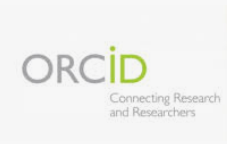Water sanitary quality in the main supply sources of the city of Matanzas
Keywords:
WATER QUALITY, POTABLE WATER, WATER POLLUTION, WATER POLLUTANTS, WATER QUALITY CONTROL, MATANZAS, CUBAAbstract
Motivated by the importance of the sanitary quality of the drinking water, we carried out an observational, descriptive study in the period 2000- 2005, in the main supply sources of the city of Matanzas, with the objective of evaluating the sanitary quality of the water through the bacteriologic, chemical and physical indicators obtained by the laboratory tests made in the CPHE of Matanzas to identify the possible contaminant factors of these sources. After finishing the investigations, we can state that the waters of the main supply sources of the city fulfil the bacteriologic, physical and chemical parameters, so, the hypothesis is demonstrated. This condition can change because of the identified risk factors in the sources, such as sanitary violation of the strict regime perimeter al Vivero Forestal, La Julia , San Juan , El Conde and ECIL. We identified variations in the physicochemical parameters, such as nitrate and chlorine at Vivero Forestal and inside Canimar; dissolved oxygen, in San Juan ; nitrate, chlorine and hardness (including some above the norm) at the ECIL; and nitrate and dissolved oxygen, at La Julia. We identified variations of the bacteriologic parameters at La Julia and San Juan. It is necessary to state that in none of the studied sources are established the three radius of sanitary protection, due mainly to the hydrogeologic characteristics of the soils and its proximity to the city.Downloads
References
Alarcón MA, Bertrán M, Cárdenas M, Campos MC. Recuento de determinación de giardia spp. y cryptosporidium en aguas potables y residuales en la cuenca alta del río Bogotá. Biomédica. 2005; 25(3): 353-65
OPS. Standards Methods for the Examination of Water and Wastewater". 16 ed. Washington:OPS; 1985.
Arellano AMD, Benamar BO. Manejo de los Recursos Hídricos: Módulo de formación ambiental básica. Camagüey: GEF; 2000. p.1-6
Cañas R, Del Puerto C. El agua y su influencia en la salud. La Habana:Ciencias Médicas; 1992.
Castillo M. Epidemiología. La Habana: Pueblo y Educación; 1988.
Ceyes AG. Medio Ambiente. Impacto y Desarrollo. La Habana: Científico-Técnica; 2003.p.105
Cuba. Ministerio de Salud Pública.Instituto de Nutrición e Higiene de los Alimentos. Ciencia de los Alimentos. La Habana: Seonigraf; 2004.p.4-16
Del Puerto C. Higiene. La Habana: Pueblo y Educación; 1989.
ECO. Glosario de términos en Salud Ambiental. México: ECO; 1995.
Fariñas Reinoso AT. La Vigilancia en Salud. La Habana:Facultad de Salud Pública; 2005
Fiandor RHF. Higiene y Epidemiología. La Habana: Servigraf; 2003.p.148-65
Fuzihara TO, Pisani BS, Bregido M, Mondel B, Selva L. Vannucci C. Ocurrencia de aeromonas spp en agua de consumo humano. Rev Inst Adolfo Lutz. 2005; 64(1): 122-7
García MN, Sosa MC, Rodríguez CL, Cangas L, Rancaño R. Sistema de vigilancia de fluoruro en aguas de consumo en Cuba. Rev Cubana Hig Epidemiol. 2002;40(2): 136-42.
Henríquez K, Rojas G, Águila A, Contreras F. Brotes de Hepatitis A en una comunidad rural en la región sexta.Chile. Clín Cienc. 2004;2(1):4-8
INHEM/FNUL. Manual de Vigilancia Sanitaria del Agua de Consumo.La Habana: INHEM; 2000.
INHEM/UTM. Riesgos biológicos ambientales. Serie Salud y Ambiente No.1. Ecuador: Universidad Técnica de Manabí; 1996.
Jacintho ACB, Miranda AP, Amaral LA. Evaluación Higiénico-Sanitaria tenores de nitrato. Hig de los Alimentos. 2005; 19(135): 92-7.
Jinkings ZF, Costa S. Sistema de información de vigilancia de calidad de agua para consumo humano. Brasil. Cod Soude Colet. 2005; 13(1): 151-6.
MINSAP. El Sistema de Vigilancia en Salud en el Nivel Primario de Atención. Área de Higiene y Epidemiología. La Habana:UATS; 2005
Mora A, Deoner A, Portugués BC. Propuesta del índice sanitario educacional para pronosticar los indicadores básicos de salud en Las Américas con respecto a las metas del milenio. Rev Costarric Salud Púb. 2005; 14(26): 41-59
OPS/OMS. Guías para la calidad del agua potable.Criterios relativos a la salud y otra información de base. Washington: OPS-OMS; 1987.
OPS/OMS. Modelo de gerencia de operación y mantenimiento de sistemas de agua potable y saneamiento. Serie Ambiental No. 4. Washington: OPS-OMS; 1986.
OPS/OMS. Uso de bases de datos para la vigilancia de la calidad del agua. Curso Internacional de Sistemas de Vigilancia Ambiental. Costa Rica; 1994.
OPS. Empresa de Acueductos y Alcantarillados.Análisis Sectorial de Agua Potable. Managua,Nicaragua: ENECAL; 2004.
Portuguez BCF, Mora AD, Brenes SG. Calidad microbiológica del Río Grande de Tirraba período 2002. Rev Cortarrie Salud Púb. 2003; 1 /2(23): 11-21.
Quintana PuertoC. Manual de Vigilancia Sanitaria del Agua de Consumo. Colombia: Lada; 2005.p.36-60
Salas HA. Manual de evaluación y manejo de sustancias tóxicas en aguas superficiales. Lima: CEPIS; 1989.
How to Cite
Issue
Section
License
All content published in this journal is Open Access, distributed under the terms of the CC BY-NC 4.0 License.
It allows:
- Copy and redistribute published material in any medium or format.
- Adapt the content.
This will be done under the following terms:
- Attribute the authors' credits and indicate whether changes were made, in which case it must be in a reasonable way.
- Non-commercial use.
- Recognize the journal where it is published.
The copyrights of each article are maintained, without restrictions.





